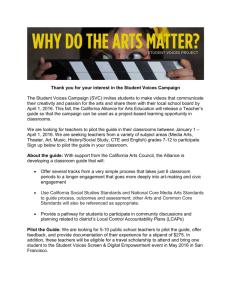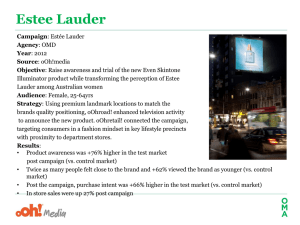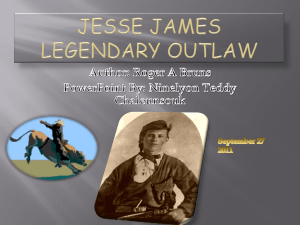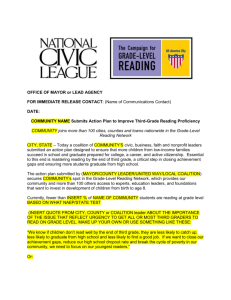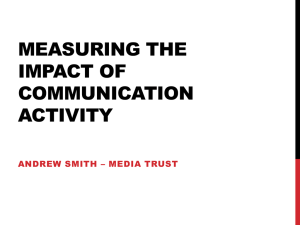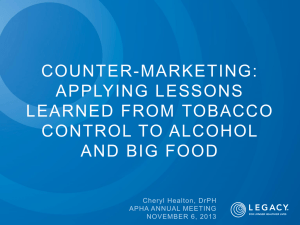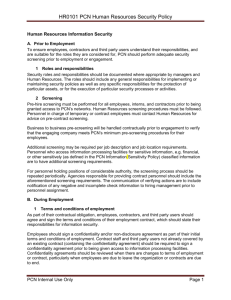Positive Community Norms - Snoqualmie Valley Community Network
advertisement
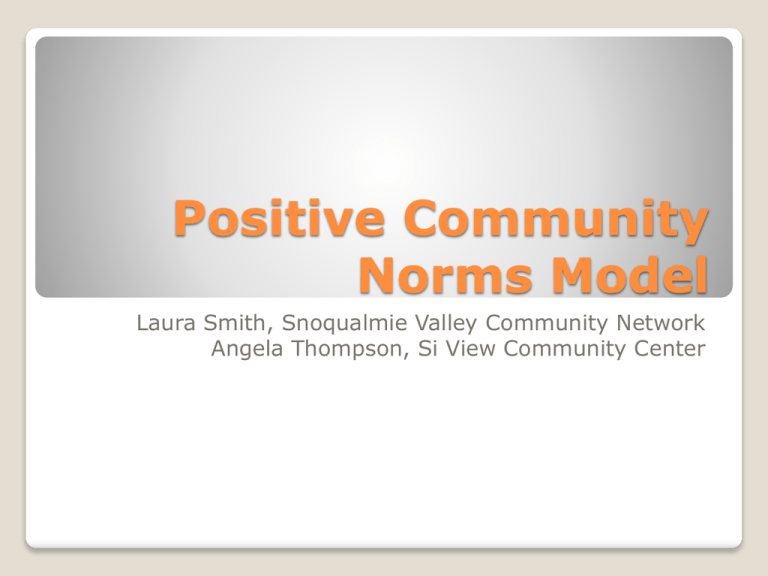
Positive Community Norms Model Laura Smith, Snoqualmie Valley Community Network Angela Thompson, Si View Community Center Quick look at our perceptions In Washington state, the percentage of adults who smoke is: a. 16% b. 25% c. 34% d. 41% Data from CDC’s Tobacco Control State Highlights 2010 Quick look at our perceptions In Washington state, the percentage of teens (12-17) who smoke is: a. 16% b. 25% c. 13% d. 10% Data from CDC’s Tobacco Control State Highlights 2010 The Positive Community Norm model is a multi-faceted approach to community transformation. PCN is founded upon the framework known as The Science of the Positive (a framework that allows us to study, measure, and grow the positive) SOTP recognizes three core elements: Spirit, Science, Action Spirit Science Action ◦ Refocus our vision on the positive, healthy normative behaviors. ◦ Provide energy to that which we want to grow. ◦ Data from interventions that portray health as the norm and expected behavior result in increased health protections and lowered risk (Perkins, Haines & Rice, 2005). Science of the Positive Be Be Be Be Be Be Be positive present perceptive purposeful perfected proactive passionate 7 core principles of SOTP Science of Positive leadership (Spirit) Positive Norms Campaigns (Science) Prevention Portfolio management (Action) Positive Community Norms Model Overview PCN Steps: Overview Planning and Environmental Advocacy Baseline Data Message Development Communication Plan Pilot Testing Implement Campaign Evaluation Consider: Who are your stakeholders? What resources does your organization have? How will we commit staff time? How will we fund campaign? Examples: Staff with various expertise Facilities and equipment Funding sources identified Planning for survey development (if needed) and analysis expertise Step 1: Planning and Environmental Advocacy Consider: What data are available about your issue and your community? Examples: Local school surveys State youth surveys Behavioral Risk Factor Surveillance System (BRFSS) National Survey on Drug Use and Health (NSDUH) State level tobacco surveys Police statistical reports Step 2: Baseline Data 10th graders perceive this many other 10th graders to be drinking regularly Percentage of 10th graders who report having a drink in last 30 days THE GAP Perception vs. Norm (Reality) Goal: shrink the perception Consider: Who can help with message development and media creation? Examples: Local advertising or publicist people Local graphic artists Local radio personalities People who are good with words People who are well connected with your focus audience Representatives from your focus audience Step 3: Message Development 1. 2. 3. 4. 5. 6. 7. Positive Normative Reflective Inclusive Neutral Clear Data-based and source specific Guiding principles of a PCN message This one does NOT work! This one works! Consider: Who can help with implementing your campaign? What other channels can you use to reach your focus audience? Examples: School personnel to help putting up posters Local advertising people to help with placement Newspaper editors Radio talk show hosts Billboard companies Electronic marquis at local businesses School newsletters athletic events handouts Banners in key locations Step 4: Communication Plan Consider: Who is best at pilot testing? Who can help gain access to your focus audience for pilot testing? Examples: Teachers at school Principals allowing access during lunch or between classes Businesses where you can conduct intercept surveys Step 5: Pilot Testing Consider: Who can help with implementing your campaign? Who can help listen for reactions? Examples: School personnel to help putting up posters Local advertising people to help with placement Newspaper editors Radio talk show hosts Billboard companies School health teachers School counselors People in local business, school staff meetings Parent meetings School newsletters athletic events handouts Step 6: Implement Campaign Consider: Who are your evaluators? Who can help document media related activities and responses? Examples: Professional evaluators Coalition members who act as “historians” Step 7: Evaluation Perceptions change faster than behavior We need access to some/more perception data from focus audience PCN campaigns require funding! Youth can serve as focus group, but should not be charged with full message development. (Too hard for us to say no to their ideas, even when they don’t fit criteria for campaign) A few other essential learnings… Great things are not done by impulse, but by a series of small things brought together. --Vincent Van Gogh Thank you.


